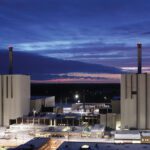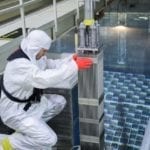Nothing gets your attention like a crisis. It exposes what you haven’t done to prepare for it, and what you must do so it never happens again.
So it is with the war in Ukraine. We now have a clearer picture of where we’ve grown too comfortable with the status quo. Countries dependent on Russian gas and oil are scrambling to secure alternate sources, and the impact worldwide has driven up prices. Russia’s fossil fuel exports are helping it stave off the economic effects of sanctions, prompting President Biden to combat Russia’s efforts by ramping up exports of liquified natural gas and releasing one million barrels of oil per day from our country’s strategic reserve.
Wrong-headed energy policy decisions of the past are coming home to roost, and Europeans in particular are paying the price. Oil and natural gas prices have surged. European countries are responding by rethinking their plans for nuclear energy, keeping existing plants running or moving ahead with plans for new plants or both.
Germany made the decision to shut down its emission-free nuclear plants, and now climate goals have become almost an afterthought as it cannot free itself from Russian gas and is still burning coal. Shutting down nuclear plants has prompted reactions from innovators and thought leaders like Elon Musk. Shutting down these plants is “crazy,” he said, adding that Germany should “restart the [reactors] already shut down.”
The UK government has made building eight new nuclear plants the centerpiece of its new energy plan to reduce dependence on Russia. And tellingly, Belgium has decided to reverse its decision to close some of its nuclear plants in the wake of events in Ukraine.
It has become clear that a stable domestic energy supply ensures energy security and the strongest protection against energy price volatility. And nuclear energy has proven to be essential to both. As America’s largest carbon-free energy source, nuclear also leads the fight against climate change.
That’s why policymakers increasingly view nuclear energy as critical to a secure energy future. No wonder China plans to build as many as 150 new reactors over the next 15 years.
While global competitiveness is at play, there are yet greater implications. Nuclear energy is essential in decarbonizing both our fuel supply and essential industries. The food and agriculture sectors, for example, are carbon-intensive, producing more than a third of all carbon emissions globally.
How, then do we realize nuclear energy’s potential in preserving energy security? First, we must keep operating existing nuclear plants. Next, we must invest.
We must invest domestically. Already innovative small modular reactors are under development. They promise better economics, more flexibility in siting, and new carbon-free ways to power industry. These new designs will depend on advanced nuclear fuel that will enhance performance.
Advanced reactors and fuel require testing, but the U.S. has limited testing capacity, and facilities elsewhere in the world once available to us have closed. And of course, testing in Russian facilities is not an option now.
That’s why it remains critical that the U.S. expand testing capacity at the Idaho National Laboratory’s Advanced Test Reactor and restore funding to the planned Versatile Test Reactor. We must also invest to fill gaps in our nuclear infrastructure including domestic uranium conversion and enrichment capacity. These actions would help build a more secure energy future with growth in nuclear power as part of a diversified energy mix. These measures can provide insurance to ward off the kind of disruptions we are seeing in Europe, with higher gas prices and higher food prices owing to the loss of exports from Ukraine and Russia.
And still, climate change issues loom. Speaking at a meeting of the world’s energy ministers last month in Paris, International Energy Agency Executive Director Fatih Birol said, “I’m very worried our climate goals may be another victim of Russia’s aggression.” We can’t let that happen. That’s why we need an ambitious yet prudent plan for preserving existing reactors and accelerating the build out of next-generation nuclear technologies. Doing so means we will be better prepared when the next crisis looms.
—Seth Grae is CEO of Lightbridge Corp., a publicly traded company headquartered in Reston, Virginia, that is advancing state-of-the-art fuel technology with the potential to transform the safety, economics, and efficiency of nuclear power plants.









